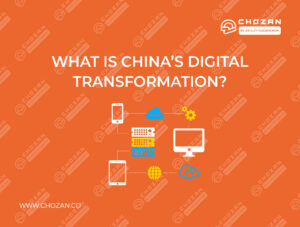Eligible KOLs can help brands and products to raise awareness or drive sales. However, fake KOLs are increasingly common in China’s online social platforms. They harm the interests of advertisers, waste money and affect brand communication. Therefore, marketers need to utilize a professional digital marketing platform to analyze the correct data, aiming to screen out the fake KOLs.
The rise of fake KOLs in WeChat and Weibo
During a June 19, 2017 roundtable session at the Shanghai Film Festival, the award-winning director Lu Chuan (The Last Supper, The Missing Gun, City of Life and Death) discussed big data in the film and television industry.
Producers, he said, select stories and cast actors based on big data gathered from audiences. Big data allows producers to assess the market value of their potential stars, helping them to predict how audiences will respond.
It’s uncertain whether relying on this data can really lead to films that perform well both at the box office and with critics or awards voters, but it’s a fact that an actor’s influence is changing the way films and television programs are cast, marketed, and produced.
The Chinese film industry isn’t the only market segment where big data has become a necessary factor. Any brand competing in the fast-growing Chinese market has to use big data. Increasingly, it’s becoming essential to apply big data to all aspects of enhancing a brand’s influence. Social media reach and influence is a huge part of a brand’s success in the Chinese market.
The value of paying key opinion leaders (KOLs) to promote your brand or product hinges on each KOL’s reach and following. The top KOLs are able to charge ever higher fees for promotional comments. But sometimes we are not sure if the apparent reach of the KOL is real, as everyone accepts that more and more fake accounts are being created and fake comments being spread on social media.
Last September, WeChat exposed detailed and verified data on some popular official accounts which appeared to have over 100,000 views. These accounts include some large KOLs and even some official brand accounts.
The difference between the real numbers and the apparent data was staggering. To combat this problem, WeChat set up a prevention system that stops companies from gaining fake followers and likes, but there are still endless ways to cheat. On Weibo, another large social media platform in China, cheating is very common, and it’s no secret that interactions and comments are for sale on Taobao.
What should brand managers and marketers do?
The key is being careful with your online advertising budget.
Don’t waste funds on fake KOLs who have gained popularity with fake likes and followers. Instead, it is advised that they harness the power of big data and AI (artificial intelligence) to analyze the data to spot fake KOLs, and then find the best combination of celebrities, KOLs and long-tail keywords to offer the best return on investment (ROI).
Collect the right data to screen out fake KOLs
The first step in identifying the right KOLs for a brand is to collect the right data. It’s too time-consuming and difficult to screen out fake followers and page views manually so brand managers need a digital marketing platform built around machine learning and big data. This allows millions of data points to be analyzed for content and value in just minutes, then aggregate the historical data for each KOL.
The combination quickly screens out fake data and page views.
In addition, brands can evaluate and predict the ROI for each KOL by mapping out historical data such as engagement and recent follower activity. Again, the key is to analyze the quality of the KOL’s engagement by analyzing the followers who engage with the KOL’s post. By mapping out the engagement, brands can screen fake KOLs and implement a weighted algorithm to find the best influencers for their content.
Currently China has a very rich ecosystem of social media platforms, including WeChat, Weibo, Meipai, Xiaohongshu, Bilibili, Zhihu, Miaopai, Youku and iQiyi. Using the methods discussed above, brands can find the most cost-effective influencers to use on different social platforms. It’s also worthy to note that a KOL that is very effective on Weibo is not necessarily effective on other platforms like WeChat or Youku.
Considering super fans and long-tail influencers
Super fans and long-tail influencers are important factors for brands to consider when trying to implement anti-cheating plans.
- A super fan is a person who likes your brand so much, that they enjoy sharing their love for your product or brand with their friends more often than the average followers.
- Long-tail influencers, like super fans, enjoy presenting themselves as knowledgeable resources on social media.
Both types of fans love to share what they know, and they will interact with your brand and with their friends more often than others on social media.
It’s important for brands to divide influencers into two categories:
- Key opinion leaders, such as internet celebrities.
- Long-tail influencers who are members of the general public but have been identified as super fans and influencers.
Compared to Internet celebrities, whose social media presence is carefully crafted by a team of professionals who are adept at various methods of increasing their apparent reach – and therefore the price they can charge – long-tail influencers and super fans are just regular people who have genuine influence on their WeChat Moments pages.
Brands that tap into long-tail influencers and super fans can expand their influencer campaigns through thousands of micro influencers at the same or lower cost than traditional celebrity-based KOL programs. These micro influencers are generally very knowledgeable about the products they promote. Moreover, their knowledge and passion make them more credible to those who read their posts.
Conclusion
By spreading the budget that was once consumed by a handful of big KOLs among thousands of micro-influencers (the super fans and long-tail influencers) you may be able to boost your ROI dramatically. The more data your brand is able to collect, the better your analysis and prediction models will be.
Also, machine learning and AI in an easy-to-use platform can help you find the right combination of celebrities, long-tail influencers, and super fans for the highest ROI on a particular product or campaign.
About the author and the company
Miranda Tan is the CEO and founder of Robin8, China’s leading Influencer marketplace powered by big data and AI. Robin8 has profiled over 30 million influencers across 12 social platforms in China. Robin8 helps brands find the best influencers for their campaign and provides end-to-end performance attribution.
Read more related posts
-
All You Need to Know About Fake Accounts on Chinese Social Media
Some companies have resorted to exploiting the use of fake accounts on Chinese social media, in an attempt to promote products, establish a good brand reputation, deal with public relations…
-
All You Need to Know About Fake Accounts on Chinese Social Media
Some companies have resorted to exploiting the use of fake accounts on Chinese social media, in an attempt to promote products, establish a good brand reputation, deal with public relations…
-
All You Need to Know About Fake Accounts on Chinese Social Media
Some companies have resorted to exploiting the use of fake accounts on Chinese social media, in an attempt to promote products, establish a good brand reputation, deal with public relations…
-
Overview of Weibo KOL Promotion
Ranging from influential celebrities and bloggers to featured communities and interest pages, Weibo KOLs (Key Opinion Leaders) are sophisticated enough to amass a large number of followers thanks to their…
-
KOL Marketing in China: Why It Works and How To Do It Right
Collaborating with KOLs is a relatively nascent medium and the expertise of ‘how to work’ with these influencers is still developing in both the supply and demand sides. KOL marketing…







